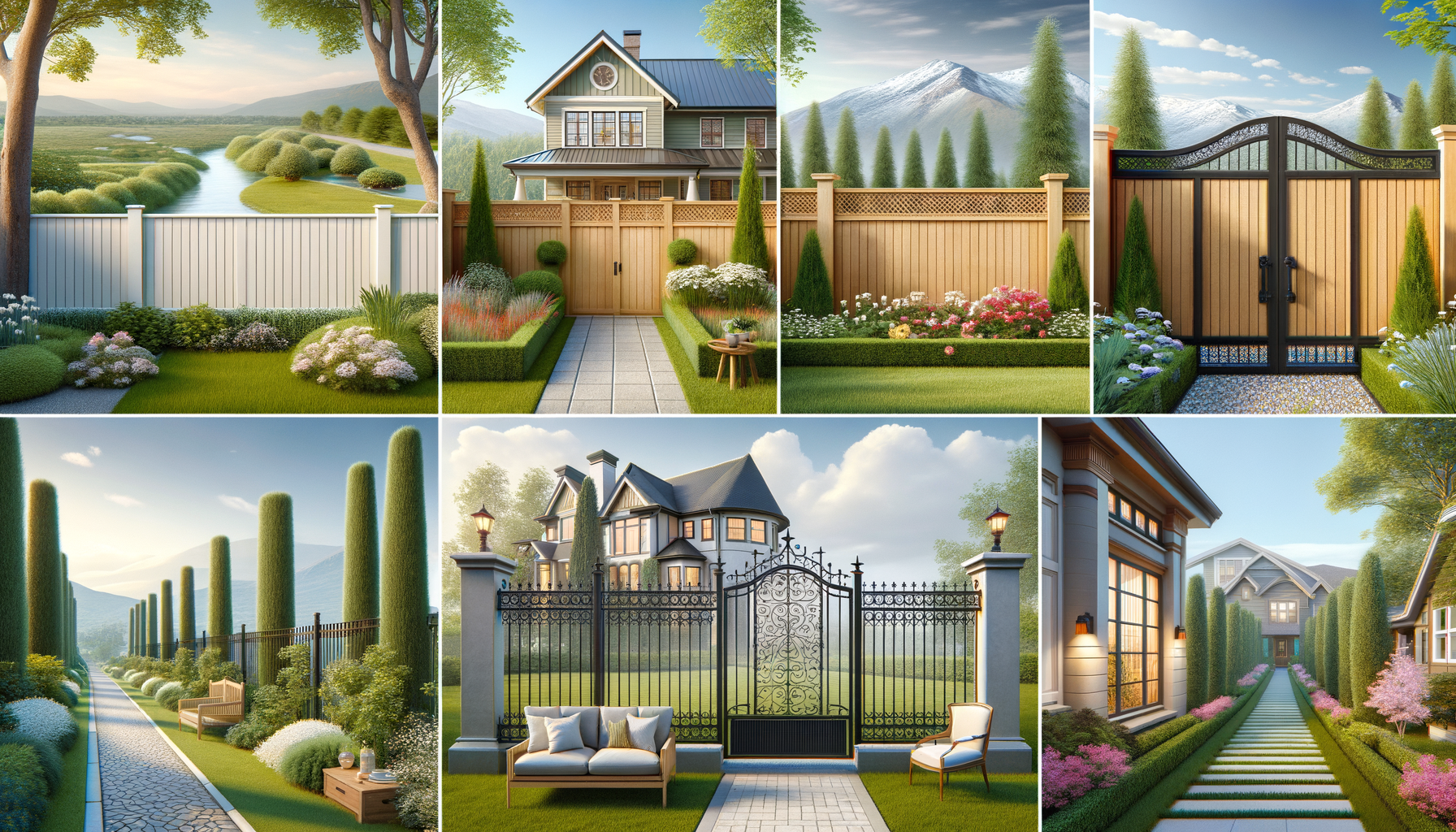Understanding the Purpose of Fencing
Fencing is not merely about enclosing a space; it’s about defining the essence of your home and garden. The purpose of a fence can vary greatly depending on individual needs and preferences. For some, it may be about ensuring privacy, while for others, security could be the primary concern. A well-chosen fence can also enhance the aesthetic appeal of your property, creating a harmonious blend with your garden and home architecture. Different materials and styles offer various benefits, making it crucial to understand your primary goal before making a decision.
For instance, if privacy is your main concern, solid wood or vinyl fences might be the right choice. They provide a barrier that shields your yard from prying eyes. On the other hand, if security is paramount, metal fences such as wrought iron or steel offer durability and strength. Additionally, for those looking to add a decorative touch, ornamental fences can serve as a beautiful frame for your garden without compromising on functionality.
Moreover, fences can serve practical purposes like keeping pets safe within your yard or preventing wildlife from entering your garden. It’s essential to consider factors such as height, material, and design to ensure the fence meets all your needs. By understanding the purpose of your fence, you can choose a solution that not only meets your functional requirements but also complements the overall aesthetic of your home and garden.
Exploring Different Fencing Materials
Choosing the right material for your fence is crucial as it determines the fence’s durability, maintenance requirements, and overall look. Let’s explore some popular fencing materials and their attributes.
– **Wood:** Known for its natural beauty, wood is a popular choice for many homeowners. It offers a classic look and can be painted or stained to match your home’s exterior. However, wood requires regular maintenance to prevent rot and insect damage.
– **Vinyl:** This material is highly durable and requires minimal maintenance. Vinyl fences are available in various styles and colors, making them versatile for different home designs. They are resistant to weathering and do not require painting or staining.
– **Metal:** Options like aluminum, steel, and wrought iron provide strength and security. While aluminum is rust-resistant and lightweight, wrought iron offers a classic, elegant look but may require regular upkeep to prevent rust.
– **Composite:** Made from a combination of wood fibers and plastic, composite fences offer the appearance of wood without the high maintenance. They are durable and resistant to rot and insects.
– **Bamboo:** An eco-friendly option, bamboo is sustainable and offers a unique aesthetic. It is suitable for a tropical or natural look but may not be as durable as other materials in harsh climates.
Each material has its pros and cons, and the choice depends on your specific needs, budget, and the climate in your area. By weighing these factors, you can select a material that offers the right balance of aesthetics, functionality, and longevity.
Designing Fences for Aesthetic Appeal
While functionality is a key factor, the aesthetic appeal of your fence should not be overlooked. A well-designed fence can significantly enhance the visual appeal of your property, adding to its overall value. The design of your fence should complement your home’s architecture and landscape, creating a cohesive look.
Consider the style of your home when choosing a fence design. For instance, a Victorian-style home might pair well with an ornate wrought iron fence, while a modern home might benefit from a sleek, minimalist design. Additionally, the color of your fence can impact its visual appeal. Neutral colors like white, gray, or natural wood tones are versatile and can blend seamlessly with most landscapes.
Incorporating decorative elements can further enhance your fence’s aesthetic appeal. This could include lattice panels, decorative post caps, or integrated lighting. These elements not only add visual interest but can also serve practical purposes, such as providing additional privacy or illuminating pathways.
Ultimately, designing a fence with aesthetic appeal involves balancing form and function. By considering both the practical and visual aspects, you can create a fence that enhances your property’s beauty while serving its intended purpose.
Incorporating Technology into Fencing Solutions
In today’s digital age, technology has become an integral part of home improvement, and fencing is no exception. Smart fencing solutions are becoming increasingly popular, offering enhanced security and convenience for homeowners.
One of the most significant advancements in fencing technology is the integration of smart security features. This includes motion sensors, cameras, and automated gates that can be controlled remotely via smartphone apps. These features provide real-time alerts and allow homeowners to monitor their property from anywhere, providing peace of mind.
Another technological innovation is the use of solar-powered lighting integrated into fence designs. This not only enhances the safety and security of your property by illuminating dark areas but also adds a decorative touch. Solar lighting is energy-efficient and environmentally friendly, making it a popular choice for eco-conscious homeowners.
Furthermore, advancements in materials technology have led to the development of fences that are more durable and require less maintenance. For example, composite materials that mimic the look of wood but offer superior resistance to weathering and pests are becoming increasingly popular.
By incorporating technology into your fencing solutions, you can enhance the functionality and security of your property while also embracing modern conveniences.
Cost Considerations and Budgeting for Fencing
Budgeting is a crucial aspect of any home improvement project, and fencing is no different. Understanding the cost implications of different fencing options can help you make an informed decision that aligns with your financial goals.
The cost of fencing can vary widely depending on several factors, including the material, design, and size of the area to be fenced. For instance, wood fences tend to be more affordable upfront but may require more maintenance over time, leading to higher long-term costs. On the other hand, materials like vinyl and composite may have higher initial costs but offer lower maintenance expenses.
When budgeting for a fence, it’s essential to consider both the initial installation costs and the long-term maintenance expenses. This includes the cost of materials, labor, and any additional features such as gates or decorative elements. It’s also wise to factor in potential repair costs, especially for materials that may be prone to damage or wear over time.
To ensure your fencing project stays within budget, consider obtaining quotes from multiple contractors and comparing their offerings. This can help you find the best value for your investment while ensuring quality workmanship.
By carefully considering your budget and exploring different options, you can find a fencing solution that meets your needs without compromising on quality or aesthetics.








